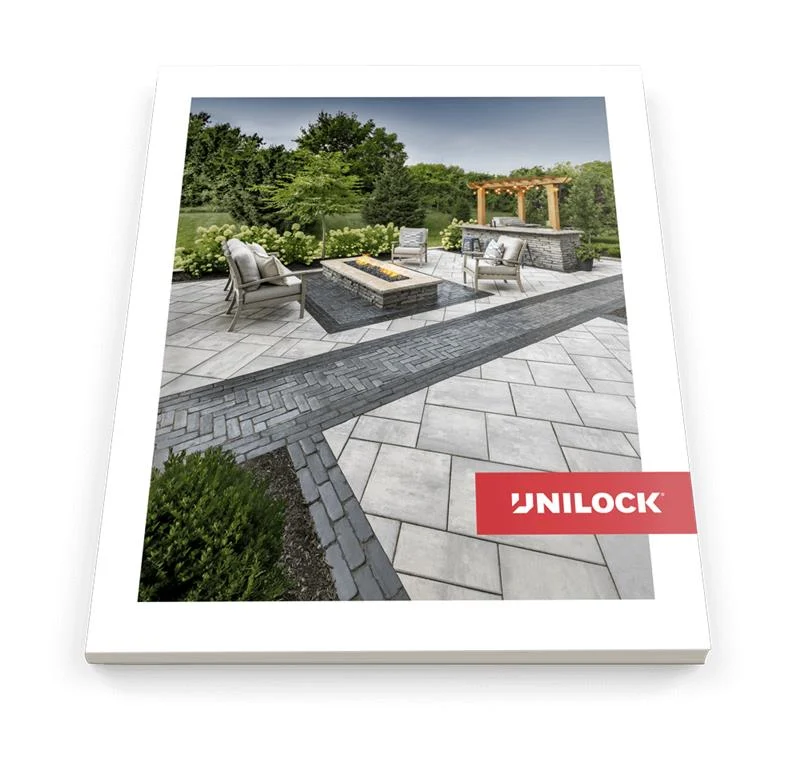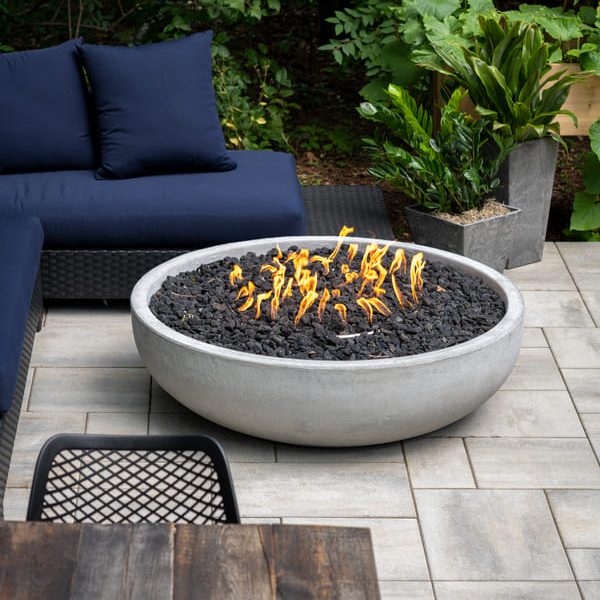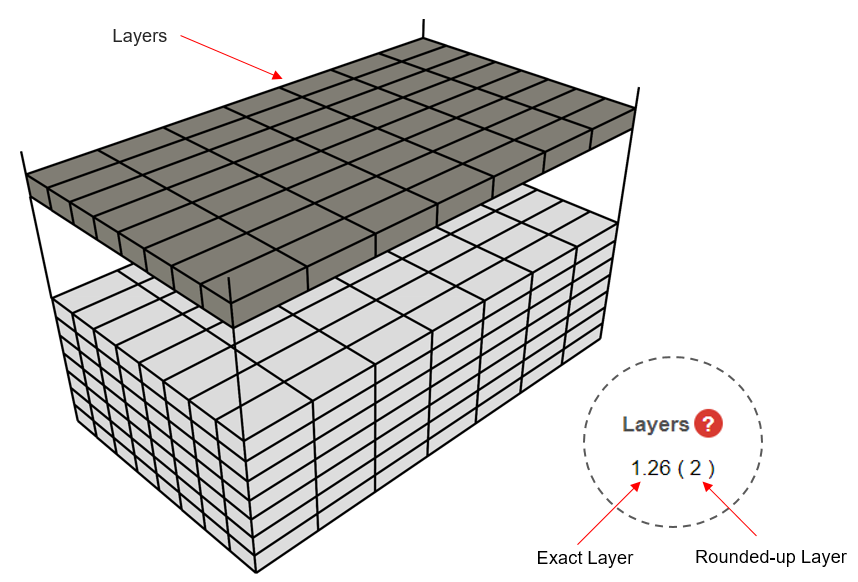
To create the perfect patio every detail should be considered, right down to the color of jointing sand used between your pavers. By matching pavers with the ideal jointing color, you can effectively highlight their edges, create a more blended surface, or better integrate your patio into the rest of your landscape.
Black Sand
Black jointing sand can create stunning visual impact when used with the right combination of pavers. Black sand is most effective in creating contrast when used in conjunction with lighter colored pavers. Umbriano in the Summer Wheat color, for example, with its light gold coloring is the perfect candidate for use with a black jointing compound. The interesting laying patterns created with the variety of shapes and sizes provided by Umbriano pavers are also brought to life using a dark shade for jointing. Senzo is another option that works well with black sand. This paver’s smooth surface and crisp edges are greatly enhanced using this jointing color, particularly when using the light Cremo color option.
While a dark jointing sand can be used to add contrast to lighter pavers, it can be also be used in tying a dark border into a patio design. Using black sand with a light Hearthstone Limestone patio bordered with Copthorne in Basalt can make the border and body of the patio less divorced from one another.
Contrast may not always be the effect you’re seeking. Black sand can also be used for creating a deep, uninterrupted surface when using darker colored pavers. Umbriano in the Midnight Sky color option, for example, blends seamlessly with black sand, creating a smoother looking surface.
Related Read: Stunning Driveway Pavers for an Impressive Entrance
Tan Sand
Tan san creates a gentle, natural appearance. Tan sand goes equally well with light and dark pavers, and can be used to add color to pavers with cool and neutral tones. Tan sand can also be used in achieving a seamless beachy effect when using sand colored pavers such as Unilock Premium Quality Sandstone in Autumn Harvest.
Tan sand is also in keeping with an earthy feel. The natural appearance of Beacon Hill Flagstone and its many color options, for example, work well with tan sand. Rivenstone is another paver that showcases the rich textures and colors of flagstone. This paver’s natural texture and coloring are both highlighted and complemented, the sand serving to draw out lighter tones and contrast with the darker tones of the blended colors.
Grey Sand
The metallic effect of grey sand makes it ideal for many projects. Lighter than black sand, while darker than tan sand, it makes a good middle ground and can create less obvious lines for a smoother effect.
Grey sand is ideal for maintaining a sleek, contemporary design. Artline’s sleek modern look, for example, is greatly complemented by grey sand. Grey sand also serves to highlight similarly neutral tones in the surrounding landscape and even the stainless steel features of outdoor kitchens.
In conjunction with warm reds and burgundys, grey sand contributes to the traditional aesthetic of brick. Copthorne brick-style pavers, particularly the red and reddish browns of Burgundy Red, Old Oak and Burnt Clay, are great candidates for achieving this look. Combined with the Basalt color option, grey sand serves to create contrast and highlight the distinction between pavers.








